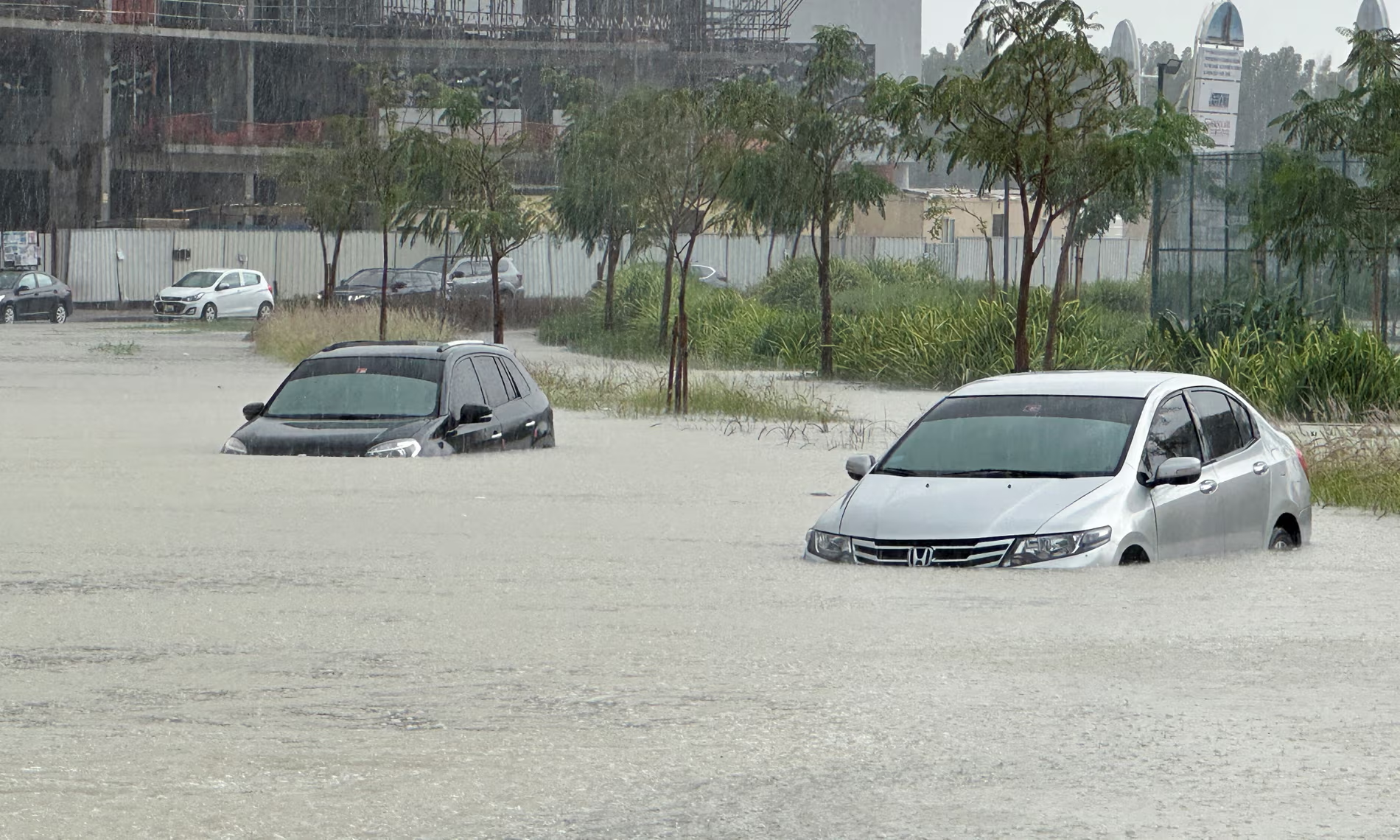What the government has described as the largest amount of rainfall in the past 75 years have hit the United Arab Emirates, flooding major highways and disrupting flights at Dubai international airport.
According to available reports, at least one person was killed after a 70-year-old man was swept away in his car in Ras Al Khaimah, one of the country’s seven emirates, police said, surpassing “anything documented since the start of data collection in 1949”.
The rains began on Monday night, and by Tuesday evening, more than 142mm (5.59in) had soaked the desert city of Dubai – normally the average amount it gets in a year and a half. Rain also fell in Bahrain, Oman, Qatar, and Saudi Arabia, although the precipitation was particularly significant in the UAE.
An average year sees 94.7mm (3.73in) of rain at Dubai international airport, the world’s busiest for international travel and a hub for the long-haul carrier Emirates, which experienced “significant disruption.
Read also: Report: Heat pushes coral reefs towards worst planet-wide mass bleaching on record
Ahmed Habib, who is a specialist meteorologist, told Bloomberg the heightened rainfall in the UAE may be attributed to the practice of “cloud seeding” in which government-operated small aircraft release salt flares into clouds to potentially enhance precipitation levels.
Some inland areas of the UAE recorded more than 80mm of rain over 24 hours to 8am on Tuesday, approaching the annual average of about 100mm. Rain is unusual in the UAE, on the arid Arabian peninsula, but occurs periodically during the cooler winter months.
Homes were flooded and vehicles were abandoned on roadways across Dubai as authorities sent tanker trucks into the streets to pump away the water. Many roads and other areas lack drainage given the lack of regular rainfall.
Major shopping centres Dubai Mall and Mall of the Emirates had flooding, with ankle-deep water in at least one Dubai Metro station, according to images posted on social media.
This is even as lightning was seen flashing across the sky, occasionally touching the tip of the Burj Khalifa, the world’s tallest building.
Story was adapted from the Guardian.
